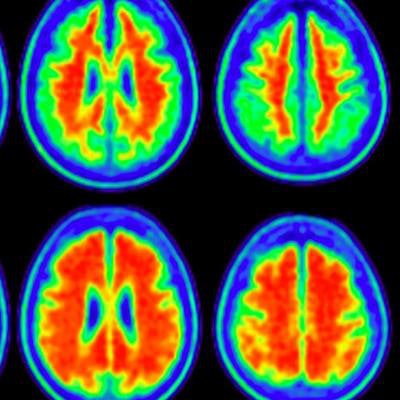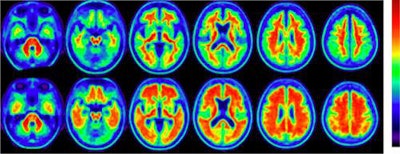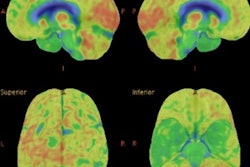
Italian researchers may have discovered a reliable clinical marker that links levels of amyloid deposits in the brain with increased episodic memory impairment through florbetaben-PET imaging, according to a study published online on 22 September by the European Journal of Nuclear Medicine and Molecular Imaging.
Researchers found that a standardized uptake value ratio (SUVr) of 1.3 for florbetaben tracer uptake distinguishes between low and high amyloid retention. Subjects above that SUVr threshold exhibited significantly poorer cognitive and episodic memory skills than individuals with amyloid deposition below that benchmark.
"By means of florbetaben-PET imaging we were able to discriminate two amnesic mild cognitive impairment subgroups with significantly different amyloid retention levels," wrote the researchers led by Dr. Andrea Ciarmiello from the nuclear medicine department at S. Andrea Hospital in La Spezia. "The elevated levels of florbetaben uptake were found to be associated to cognitive decline, in particular to a significantly greater decline in episodic memory."
 PET images show levels of florbetaben uptake in amyloid in relation to mild cognitive impairment. Average axial slices of mild amyloid load compare low uptake (amyloid negative) (top row) and uptake with high amyloid load (amyloid positive) (bottom row). Image courtesy of EJNMMI.
PET images show levels of florbetaben uptake in amyloid in relation to mild cognitive impairment. Average axial slices of mild amyloid load compare low uptake (amyloid negative) (top row) and uptake with high amyloid load (amyloid positive) (bottom row). Image courtesy of EJNMMI.For years, researchers have tried to identify clinical markers as a reliable way to predict a person's progression to Alzheimer's, as well as other forms of dementia and neurological digression.
"To date there are no means to accurately identify those likely to progress from mild cognitive impairment to advanced stages of dementia," the authors noted. "Nor, in the latter case, is there a way to establish the etiology and the pathophysiology of the process responsible for conversion, whether it be Alzheimer's or other dementing conditions."
In this prospective study, 63 subjects underwent PET/CT scans (Discovery 710, GE Healthcare) approximately 86 (± 8) minutes after injection of 306 (± 29) MBq of florbetaben (Neuraceq, Life Medical Imaging). The researchers also used the Mini-Mental State Examination (MMSE) to determine a subject's cognitive abilities. The standard MMSE score above 24 was an indication of mild cognitive impairment and scores below 24 as cognitively normal.
The patients were divided into two groups: 34 individuals (54%) (mean age 76.4 years ± 6.0 years) who were amyloid positive based on an SUVr higher than 1.3, and 29 people (46%) (mean age 71.5 years ± 8.0 years) who were amyloid negative. There was no significant difference or correlation between amyloid deposition and the age of the patients.
Among the 35 patients with episodic memory impairment, 28 (80%) had positive amyloid scans, compared with seven cases (20%) determined as amyloid-negative. Conversely, there were six subjects (21%) who were amyloid-positive and 22 amyloid-negative cases (79%). In other words, amyloid positivity was a significant factor in identifying patients with episodic memory issues.
| Correlation of florbetaben-PET and episodic memory impairment | |||||
| Sensitivity | Specificity | p value | Positive predictive value | Negative predictive value | |
| Subjects with episodic memory impairment | 80% | 79% | < 0. 00001 | 82% | 76% |
As for the possibility of a patient advancing to Alzheimer's, the researchers found that amyloid deposition increased as function of memory impairment with a rate of 0.13/point of composite memory score (p = 0.0003).



















